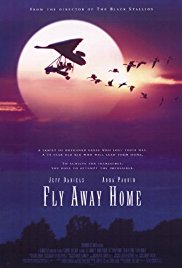Assignment #2:
The following information presented in lecture form or through a student handout will contribute to an understanding of the second backstory and enable students to see the value of a backstory in literature and film. It will also set the stage for the next suggested assignment.
It is important that students learn to write summaries of information they are given in a lecture, read in a book or handout, or see in a film. The following assignment provides an opportunity to exercise that skill based upon the following information which can be imparted to students through a lecture or through a handout.
In the 1990s, scientists recognized that the extinction of the entire population of migrating whooping cranes was imminent. Whooping cranes are rare even under the best of conditions and with the encroachment of humans into their habitat, their numbers were reduced to less than 200 birds living in one flock. Efforts to develop a second migrating flock met with failure until scientists teamed up with William Lishman, who had learned to lead Canada Geese chicks on migration routes using ultralight aircraft. Lishman’s efforts are alluded to with a good degree of accuracy in the movie.
When they are born, young whooping cranes, like most other birds, will “imprint” on the animals that they first see and hear. In the wild, these are the chicks’ parents. Imprinting is an essential step in the development of whooping crane chicks because they don’t instinctively know how to catch food, which food to catch, or how to fly; they have to be taught these skills by their parents. In the film, the goslings imprint on Amy, following her everywhere.
It was a complex undertaking for scientists to establish a new migrating whooping crane flock; this is not fully shown in Amy’s experience with her geese. Scientists had to secure wintering and summering grounds and rest stops along the journey. Government permissions had to be obtained. Since whooping cranes were extremely scarce, Sandhill cranes, a closely related non-endangered species, were used for the trials. A migratory path with stopovers for rest and feeding was established. The next spring, some of the cranes flew back to the hatching site in the north. However, the cranes had lost their fear of people and would land in schoolyards and other places where people congregated.
When they started the whooping crane migrating flock, the scientists caused the birds to imprint on the sight and sound of the ultralight aircraft. The people who took care of them donned non-human, crane type costumes. When the birds were ready to fly, they followed the ultralight aircraft on exercise runs and finally, on the migration to southern wintering grounds. The next spring, on their own, the birds retraced their flight to the location where they had hatched. As of 2005, the new Eastern whooping crane migrating flock consisted of 46 birds.
In Fly Away Home, the human element is very important and the birds bond to Amy, rather than the ultralights. This plot element facilitates the connection between the back story and the central story in the film.
Write a one-paragraph summary of the system used to teach a flock of birds to migrate. Use the information as it is presented in the handout [or explained in the class lecture] about the actual scientists who worked to create a new migratory route for whooping cranes.



